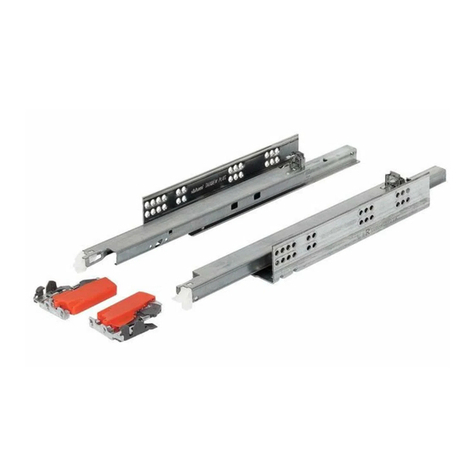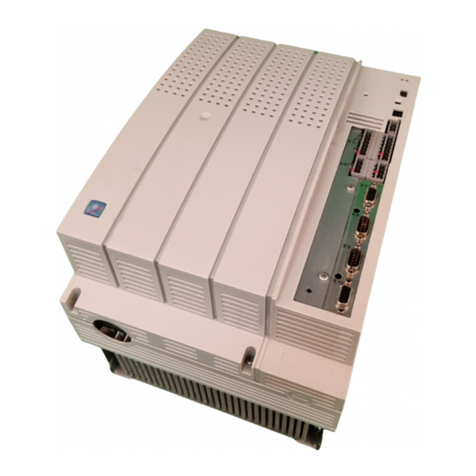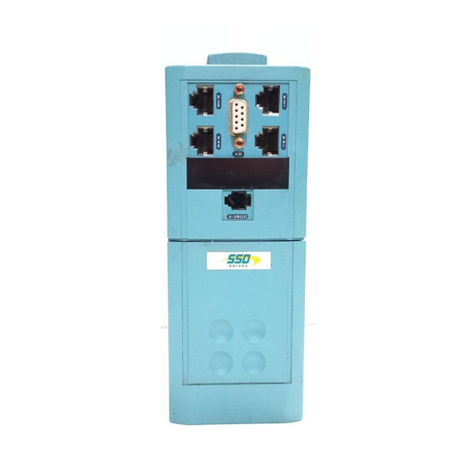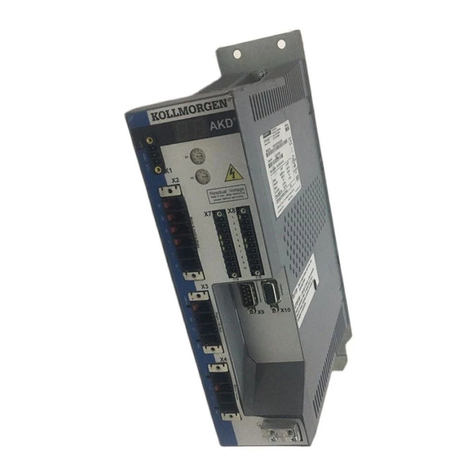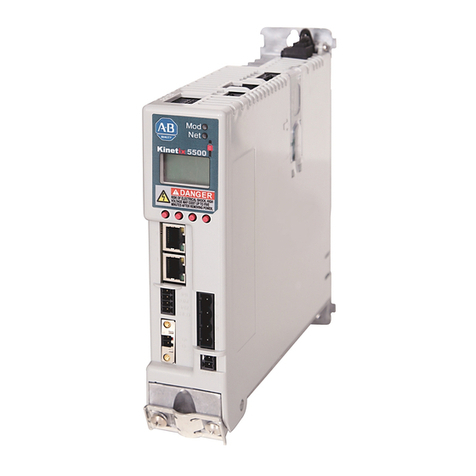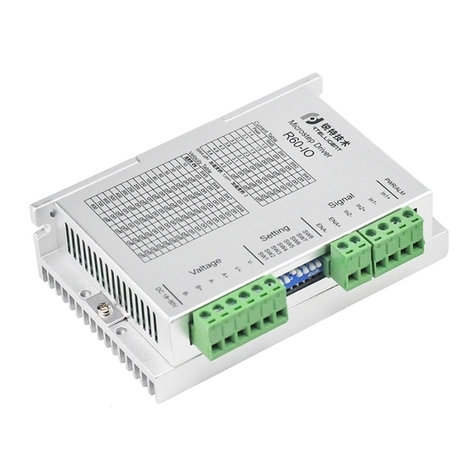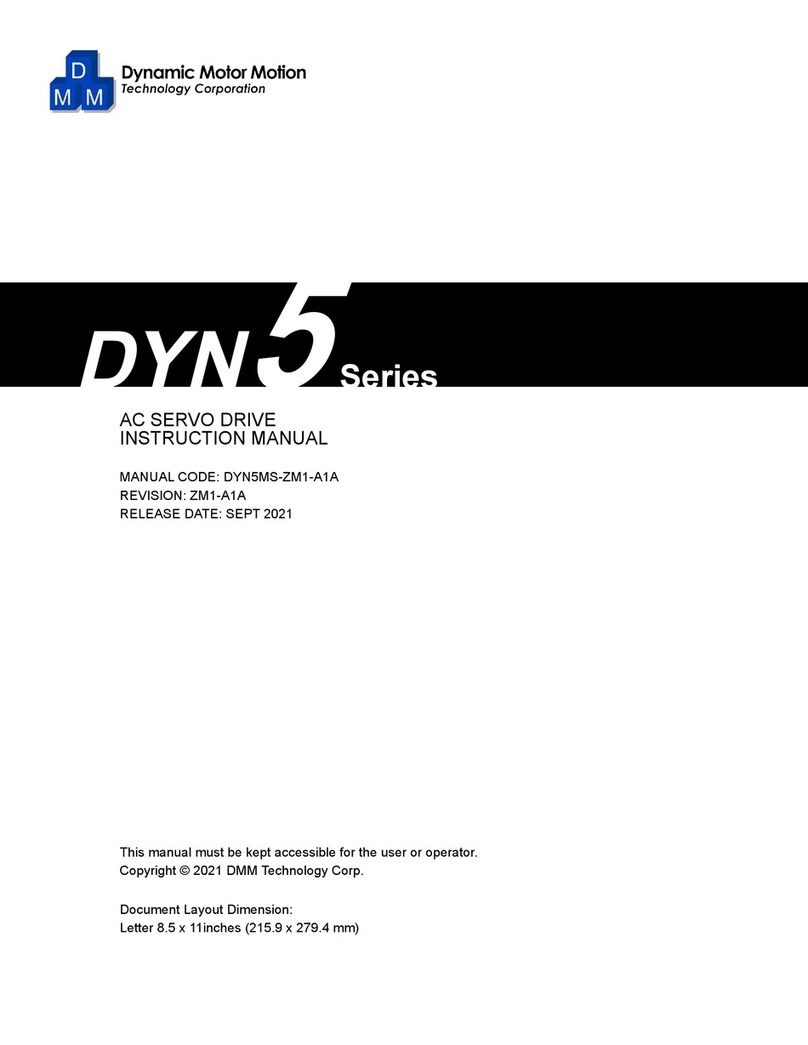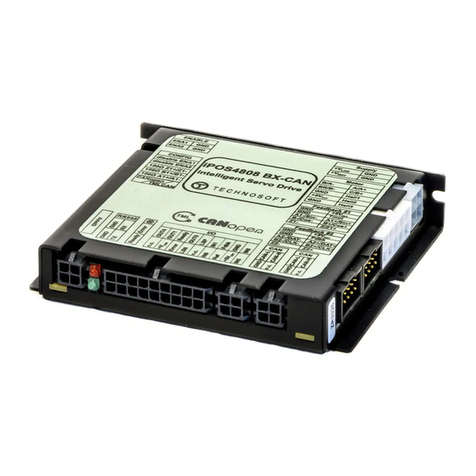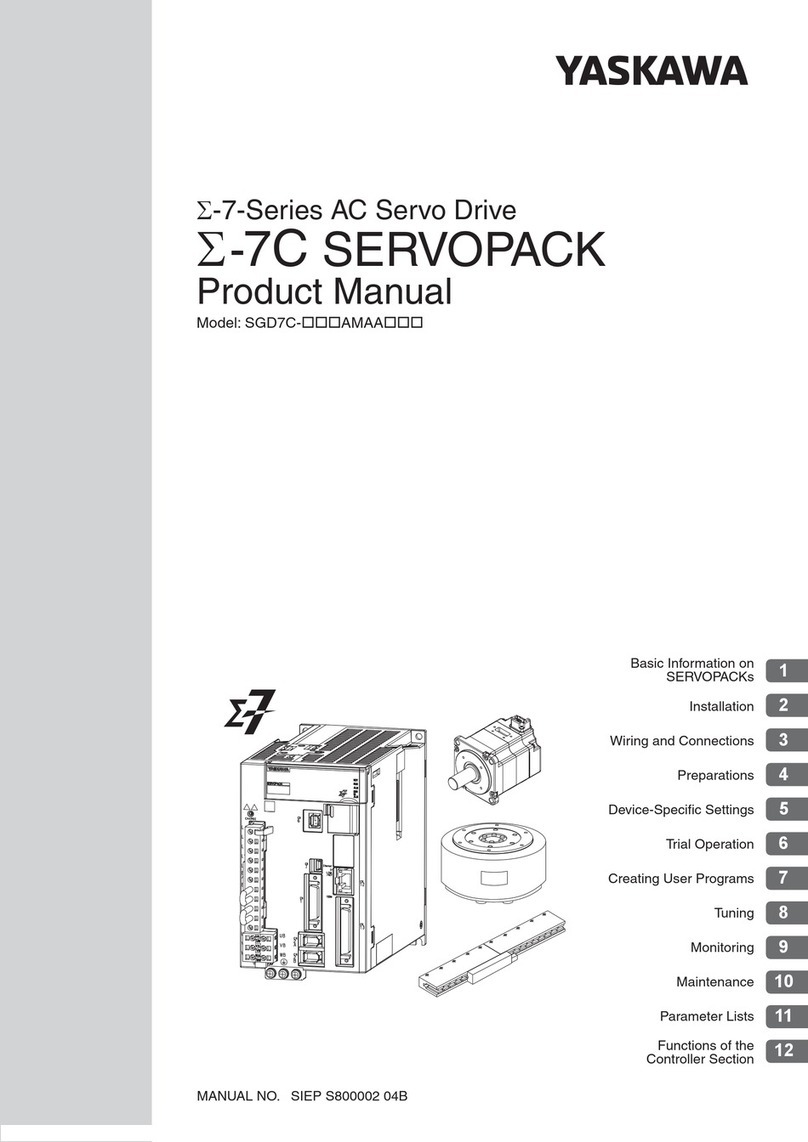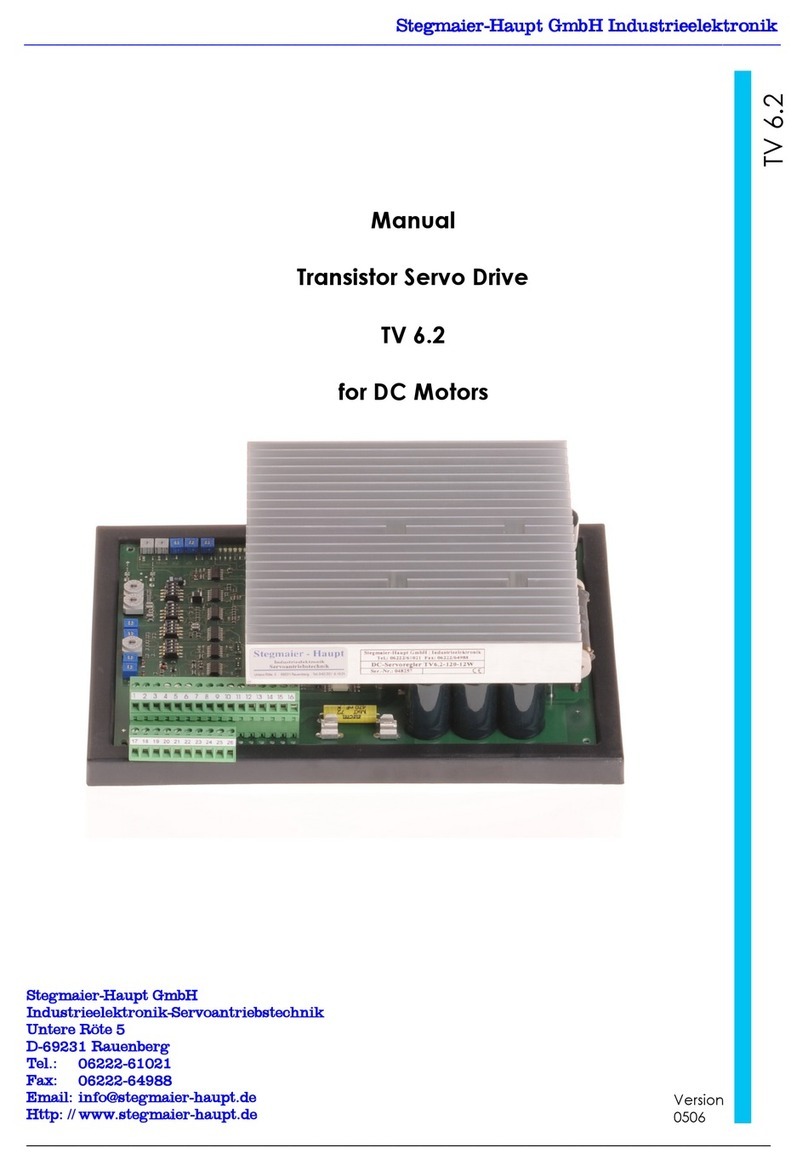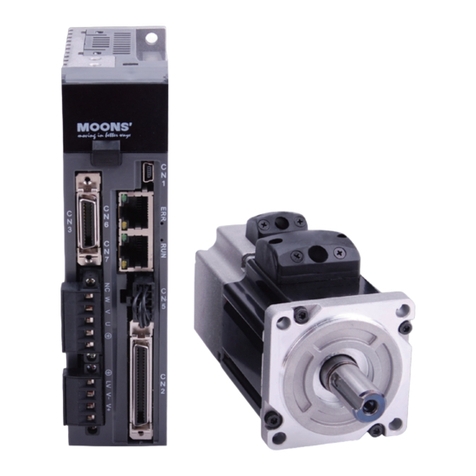DF ROBOT Veyron User manual

1
1.Overview.....................................................................................................................................................................3
1.1 Electrical specification........................................................................................................................ 3
1.2 Power terminal definition...................................................................................................................... 3
1.3 Encoder terminal definition.................................................................................................................. 3
1.4 Communication terminal definition...................................................................................................... 3
1.5 Cooling fan terminal definition.......................................................................................................... 4
1.6 Indicator definition................................................................................................................................ 4
1.7 KEY sets the button description.......................................................................................................... 4
1.8 Interface type............................................................................................................................................ 4
2 Practice guide........................................................................................................................................................ 6
2.1 UART interface............................................................................................................................................ 7
2.2 PPM interface...............................................................................................................................................9
2.3 Analog interface...................................................................................................................................... 12
3 Instruction set V1.0.......................................................................................................................................... 14
3.1 Query drive type (ID,PING\r\n).......................................................................................................... 15
3.2 Read the drive configuration parameters (ID,RCONFIG\r\n)......................................................15
3.3 Restore factory settings (ID,FCONFIG\r\n)....................................................................................15
3.4 Query Help (ID,HELP\r\n)...................................................................................................................... 15
3.5 Save all the configuration parameters (ID,EEPSAV\r\n)............................................................16
3.6 Set the baud rate (ID,SBR,******\r\n)............................................................................................ 16
3.7 Set the drive addresses (ID,SNA,***\r\n)......................................................................................16
3.8 Get the number of cumulative pulse encoder (ID,GEP,*\r\n)....................................................16
3.9 Reset encoder cumulative number of pulses (ID,CEP,*\r\n)......................................................17
3.10 Set encoder line (ID,SER,****,####\r\n)......................................................................................17
3.11 Set reduction ratio (ID,SGR,****,####\r\n)................................................................................17
3.12 Set direction mode (ID,SDIR,*\r\n)................................................................................................ 17
3.13 Set the PWM signal generating method (ID,SPWM,*\r\n)............................................................18
3.14 Set zero signal detection or not when start (ID,SSD,*\r\n)................................................18
3.15 Gets the current rotation speed (ID,GVC,*\r\n)........................................................................18
3.16 Get the maximum rotation speed (ID,GVM,*\r\n)..........................................................................18
3.17 Set synchronous speed (ID,SVS,*,*****\r\n)................................................................................19
3.18 Set asynchronous speed (ID,SVR,*,*****\r\n)..............................................................................19
3.19 Perform asynchronous speed (ID,AVR,*,#\r\n)..............................................................................19
3.20 Get Acceleration (ID,GACC,*\r\n).................................................................................................... 19
3.21 Get reduced speed (ID,GDEC,*\r\n).................................................................................................. 20
3.22 Set increase or decrease speed (ID,SAD,*,*****,#####\r\n)..................................................20
3.23 Get the PPM Max (ID,GPA\r\n)............................................................................................................ 20
3.24 Get the minimum PPM (ID,GPI\r\n).................................................................................................... 20
3.25 Set PPM extreme (ID,SPPM,****,####\r\n)......................................................................................20

2
3.26 Get the control signal mode (ID,GSM\r\n)....................................................................................21
3.27 Set the control signal mode (ID,SSM,*\r\n)................................................................................21
3.28 Set time limit of break mode (ID,SDCT,****\r\n)......................................................................21
3.29 Get the PID parameter- Kp (ID,GKP,*\r\n)....................................................................................21
3.30 Get the PID parameter- Ti (ID,GTI,*\r\n)....................................................................................21
3.31 Get the PID parameter- Td (ID,GTD,*\r\n)..................................................................................22
3.32 Set the PID parameters (ID,SPID,*,*******,##,&&\r\n)............................................................22
3.33 To get the maximum permissible continuous current (ID,GMCC\r\n)......................................22
3.34 To get the maximum permissible peak current (ID,GMPC\r\n)..................................................22
3.35 To get the current current (ID,GCC,*\r\n)..................................................................................22
3.36 To set the maximum permissible continuous current and maximum permissible peak current
(ID,SMLC,*****,#####\r\n).................................................................................................................................... 23
3.37 To get the maximum allowed temperature (ID,GMT\r\n)..............................................................23
3.38 To get the current temperature (ID,GCT\r\n)..............................................................................23
3.39 To set the maximum allowable temperature (ID,SMT,***,\r\n)................................................23
3.40 To get the system voltage (ID,GSV\r\n)........................................................................................ 23
3.41 To set the limit voltage (ID,SLV,***,###\r\n)..........................................................................24
3.42 To get the fault information (ID,GER\r\n)..................................................................................24
3.43 Clear all fault messages (ID,CER\r\n).......................................................................................... 25
3.44 Output real-time speed (ID,OUT,* \r\n)........................................................................................ 25
4 Overall dimensions.............................................................................................................................................. 25

3
1.Overview
Veyron motor drive series are the latest intelligent motor drive devices produced by DFRobot. They
cover Brush DC Motor, Brushless DC Motor, Stepper Motor, etc. The Veyron 2x25A/12A is Brush
DC motor drive which contains 3 intelligent interface mode: Analog Mode, PPM Mode and UART
mode. The perfect protection: under-voltage, over-voltage, under-current, over-current, over-heating,
shorted, reverse voltage makes it safely and reliably. And it usability: interface chosen by one button,
auto recognized open/closed loop system, self-tuning PID parameter, etc simplifies the user
operation.
1.1 Electrical Specification
Input voltage range: DC 6~36V, limit voltage is 40V
Single maximum permissible continuous current : 25A (Veyron 2x25A)/12A( Veyron 2x12A)
Single channel the maximum allowable: 30 A(Veyron 2x25A)/20 A( Veyron 2x12A)
1.2 Power Interface
M1A: motor1 wire a
M1B: motor1 wire b
B+: external DC power input +
B-: external DC power input-
M2A: motor2 wire a
M2B: motor2 wire b
1.3 Encoder Interface
The same side encoder terminal maps the same side motor encoder interface.
A: encoder A-phase pulse signal input
B: encoder B-phase pulse signal input
GND: Logical ground
VCC: DC-5V power output
1.4 Communication Interface
GND: drive’s logical ground
5 V: DC-5V/1A power output

4
S1:
In Analog interface mode, it is the M1 analog voltage input
In PPM interface mode, it is the M1 PWM signal input
In UART interface mode, it is the drive “Rx”
S2:
In Analog interface mode, it is the M2 analog voltage input
In PPM interface mode, it is the M2 input signal pulse width
In UART interface mode, it is the drive “Tx”
1.5 Radiator Fan Interface
Radiator fan has 2 port, they are 5V power output pin and controllable GND.
Cooling fan can be directly connected to 5V (max current 500mA).
1.6 Indicator Leds
Reverse: Reverse power protection indicator led (red)
Set: Set pattern indicator led (green)
Analog: Analog mode indicator led (green)
PPM: PWM mode indicator led (green)
UART: UART mode indicator led (green)
Status1: (yellow)
In PPM and Analog mode, the brightness of the indicator led indicates the speed of M1
In UART mode, when the drive receives data, it will be ON, vice versa.
Status2: (yellow)
In PPM and Analog mode, the brightness of the indicator led indicates the speed of M2
In UART mode, when the drive receives data, it will be ON, vice versa.
Error: Fault indicator led (red)
1.7 KEY --Set Working Mode
You could change its working mode via pressing the key button: “Set, Analog, PPM, UART (four
modes). Please check the corresponding indicator LED. It will be reset to default mode, only when
current mode doesn’t match with the internal saved mode.
1.8 Interface Type
Analog (two-channel analog voltage signal input): voltage range 0-5V (usually connected with an
external potentiometer, if possible , it is recommended that user could add a voltage follower at the
analog voltage output ; or use the PWM+ filter circuit for voltage output).
PPM (two-channel PWM signal input): the control signal source can be directly generated by a

5
microcontroller..
UART: support 10 commonly used baud rate, compatible with both 3.3V and 5V systems.
1.9 Control mode
Open-loop speed control mode: this mode applies to the open-loop motor control mode (without
encoder), the motor speed is based on the control variable.
Closed-loop speed control mode: this mode applies to the closed-loop motor control (with encoder).
You could set the encoder parameter (via the UART interface) to achieve closed-loop speed control.
1.10 Protection function
In UART mode, the fault information can be gotten via the "GER" instruction, please refer to the
drive Instruction set. In PPM and Analog mode, the error can be checked through the combination
of Set, Analog, PPM, UART led, as shown in the following table (Note: any kind of failure occurs,
the motor will stop working, enter fault mode, in which case, the user will not be able to control the
motor. In UART mode, the fault information could be cleared via the "CER” instruction to return to
normal mode. In PPM and Analog mode, only it could eliminate the fault information by resetting
the drive.):
Set
Analog
PPM
UART
Error
Error Sources
Lower Voltage
Over Voltage
Over Temperature
M1 Over Current
M2 Over Current
Control Signal Lost
Reverse power protection, when power is reversal connected, power supply reverse polarity indicator
light up (Reverse), indicating fault.
You can set the threshold of the under-voltage and overvoltage protection. If the input voltage
exceeds the set range, the fault led (Error) will be on, and the drive will go into fault mode.
You can set the maximum allowable continuous current protection. Actual when the current is higher
than the maximum allowable continuous current, and less than the maximum allowable peak current,
it could continue to be 2s, if time exceeds 2s, the fault led (Error) will be on, the drive will go into
fault mode.
You can set the maximum allowable peak current protection. Actual when current is higher than the
maximum allowable peak current, it could continue to be 400ms, if the time exceeds 400ms, the fault
led (Error) is on, the drive goes into fault mode.
You can set the maximum allowable temperature protection. When the internal temperature is higher

6
than 40℃and less than the limit temperature, the drive automatically open the radiator until the
temperature dropped below 35℃. When the internal temperature exceeds the limit temperature, fault
led (Error) will be on, and the drive will go into fault mode.
In PPM and UART mode, you could set it to be the discontinuous mode via the “SSM” instruction. If
there is no valid control signal input in the limit time, the fault led (Error) will be on, and the drive
will go into fault mode.
The driver can run in unidirectional control mode or bidirectional control mode. In the unidirectional
control mode, you could start zero detection via “SSD” command. When the driver restarts, if the
initialize speed signal is not zero, the drive will be stop unless the control signal drops to zero. This
is zero detection protection.
\
2 Practice guide
So far, maybe you still don't know what to do with this drive, maybe you feel a bit complicated. But
it is just “maybe”, then I will introduce this simple dual brush DC motor drive. At the beginning of
this section, first, I will show you a brief description of several associated control parameters.
Direction Mode:
This parameter is only valid in Analog mode and PPM mode. It decides its running mode:
unidirectional control mode or bidirectional control mode.
Zero Detection:
This parameter is only valid in Analog mode, PPM mode and unidirectional control mode. It decides
whether it need to start the detection of the zero start. (It will detect whether there is a speed signal
before running. If there is a signal, it won’t start until the signal drop to zero.)
Signal Control Mode:
This parameter is only valid in PPM mode and UART, cooperated with “intermittent mode time
limit” parameter, and decided whether stopping motor during operation, when it loses control signal.
In addition, there are some brief introductions about factory default values of drive :
Common Parameters
ID : 1
BaudRate : 57600bps
Voltage Range : 6.0-36.0V
Maximum Continuous Current : 25000mA
Maximum Peaky Current : 30000mA
Protected Temperature : 100C
Signal Mode : Continuous
PPM Signal Range : 500-2500us
PWM Type : Hpwm-Lpwm(on-off-on)
Direction Type : CW/CCW
Discontinuous Timeout : 1000ms
Start Detection Mode : Non Zero Detection

7
Parameters Of Motor1
Reduction Gear Ratio : 1.00
Encoder Resolution : 1
Maximum Velocity : 1000
Velocity Mode : Unloop
Acceleration : 100
Deceleration : 100
PID_Kp : 0.000
PID_Ti : 0
PID_Td : 0
Parameters Of Motor2
Reduction Gear Ratio : 1.00
Encoder Resolution : 1
Maximum Velocity : 1000
Velocity Mode : Unloop
Acceleration : 100
Deceleration : 100
PID_Kp : 0.000
PID_Ti : 0
PID_Td : 0
2.1 UART interface
You will see the following phenomenon in the first use: the three indicators “Set”, “UART”, “Error,”
light up for 2s: then indicator “Error” and “Set” turn off. It shows the current mode is UART mode.
When the three lights are on at the same time, it indicates the current baudrate. The relationship
between Baud rate and the led State is shown in the following table:
Set
Analog
PPM
UART
Error
BaudRate(bps)
1200
2400
4800
9600
14400
19200
28800
38400
57600
115200

8
Open-loop control mode
Connect the cable, as shown in the figure (of course, connect one circle if you only need one motor):
In UART open loop control mode, the parameters associated with the actual control are as follows:
baud rate, drive address, PWM signal generating method, synchronous speed, asynchronously speed,
perform asynchronous speed, acceleration, deceleration, control signal mode, break mode time limit,
the maximum permissible continuous current, the maximum permissible peak current limit, the
maximum allowable temperature and voltage. Please refer to instruction set, set the configuration
parameter which you needs, when the configuration is completed, you can send comm to control the
motor.
Close-loop control mode
Connect the cable, as shown in the figure:
In UART close-loop control mode, the parameters associated with the actual control are as follows:
baud rate, drive address, Encoder line number, gear ratio, PWM signal generating method, the
maximum speed, synchronous speed, asynchronously speed, perform asynchronous speed,
acceleration, deceleration, control signal mode, break mode time limit, PID parameters, the
maximum permissible continuous current, the maximum permissible peak current limit, the
maximum allowable temperature and voltage.
1 Configure Encoder lines, gear ratio and other parameters.
2 Press KEY button on the side for several times, the number depending on the current mode, if the
current mode is UART, it just need three times, and the indicator lights on, entering the Setup mode.
At this point, the led Status1 flashes (unrelated to the UART mode), and then led Status2 flashes
(unrelated to the UART mode).
3 M1 began rotating (Note: For that the instruction of speed control is judged by the plus and minus
to distinguish motor rotating direction, we regard this motor rotating direction as the Positive), when

9
drive detects encoder signal, A/B phase sequence of coding device will adapted automatically, then
PID auto-tuning will start on M1, M1 gradually runs stably, then it completes PID parameter
auto-tuning of M1. After that, it’s the PID parameter auto-tuning of M2.
4 Drive automatically reset, enter the default UART mode.
5 You can use (RS232 to UART or USB to UART) Serial Assistant software send "RCONFIG"
instruction to read drive configuration parameters, querying all saved internal parameters, at the
same time you will notice the parameter of motor with encoder turns from “Velocity Mode” to “Loop
Mode”, furthermore, it need to be noted that in the actual operation of speed control, the target speed
may not be set to be lower than the highest speed, if not, the instructions will not be respond. Please
refer to instructions set, set the configuration which you need, when the configuration is completed,
you can send directives to control the motor.
2.2 PPM interface
PPM extreme value, a very important parameter, there are two methods to set it. First, send
instruction through UART interface; second, in Set mode, while Status1 and Status2 are flashing, the
user who is using remote control model could put the corresponding joystick to its extreme location,
and holding for about 3 seconds, the drive will automatically recognize threshold value. In this
process, if S1 and S2 have already received right PWM input, Drive will calculate reliable limits
according to the signals, if there is only one correct PWM input, then the drive will use this signal as
an final limit value. Certainly, you can also send PWM signal of the two limit positions through AVR.
Regardless of which method you use, PPM limit value shall not exceed the scope 500us-2500us. In

10
the PPM interface, any other configuration parameters can not be set directly apart from PPM
extreme, if you do need to set up the relevant parameters, you must configure them by using UART
interface. All the fault messages, it should be checked with above table 1.10 “Protection”. In addition,
both in open-loop or closed-loop control mode, the relationship between PPM signal and motor
speed are described as the figure below (Note: when the signal is below the minimum limit value or
over the maximum limit value, the drive will not respond).
Open-loop control mode
Connect the cable, as shown in the figure (Connect one circle if you only control one motor):
In UART open loop control mode, the parameters associated with the actual control are as follows:
direction mode, PWM signal generating method, Starting zero signal detection, PPM extreme value,
control signal mode, Discontinuous mode time limit, the maximum permissible continuous current,

11
the maximum permissible peak current limit, the maximum allowable temperature and voltage.
Please refer to instruction set, set those depending on the configuration needs, when the
configuration is completed, you can send directives to control the motor.
Close-loop control mode
Connect the cable, as shown in the figure (Connect one circle if you only control one motor):
In PPM close loop control mode, the parameters associated with the actual control are as follows:
encoder lines, gear ratio, direction mode, PWM signal generating method, Starting zero signal
detection, PPM extreme value, control signal mode, Discontinuous mode time limit, PID parameters
the maximum permissible continuous current, the maximum permissible peak current limit, the
maximum allowable temperature and voltage.
1 Configure Encoder lines, gear ratio and other parameters with UART interface.
2 Press KEY button on the side to enter the SET mode(“SET” indicator led lights up), the led Status1
blinks, then, it’s the led Status2. (about how to set PPM limit value, it’s already in the start part of the
PPM interface).
3 M1 began rotating (Note: we regard this motor rotating direction as the Positive, if Direction mode
is bi-directional mode, when the PPM signal is in S_Middle~S_Max, motor is running positively,
when PPM signal is in S_Min~S_Middle motor runs in the opposite direction), when drive detect
coding device signal, A/B phase sequence of coding device will adapted automatically, then PID
auto-tuning will start on M1, M1 gradually runs from oscillation State to steady-state, then it
completes PID parameter auto-tuning of M1. After that, it’s the PID parameter auto-tuning of M2.
4 Drive automatically reset, enter the default UART mode, then turn to PPM mode by KEY button.
Finally, confirm all the parameters are set, you can send permitted PWM to control the motor.

12
2.3 Analog interface
Analog interface mode is the simplest interface, and it is often used to be tested whether drive circuit
is good or not. Compared to above two interfaces, there is only one detail need to be noted, if the
user is using a potentiometer to regulate motor speed, the direction mode is bidirectional, and require
potentiometer mechanical location highly symmetric (that is in the mechanical rotating range
potentiometer could reach, a half for positive running, another half opposite-direction running), then
at the output terminal of potentiometer, recommends using voltage followed device output, certainly,
the user can also use AVR to create PWM + filtering circuit, or use dedicated DAC chip to achieve
controllable output voltage signal. In addition, both in open-loop or closed-loop control mode, the
relationship between input voltage value and motor speed are described as the figure below.
Open-loop control mode
Connect the cable, as shown in the figure (Connect one circle if you only control one motor):

13
In UART open loop control mode, the parameters associated with the actual control are as follows:
direction mode, PWM signal generating method, Starting zero signal detection, control signal mode,
discontinuous mode time limit, the maximum permissible continuous current, the maximum
permissible peak current limit, the maximum allowable temperature and voltage. Please refer to
instruction set, set those depending on the configuration needs, when the configuration is completed,
you can control the motor with voltage signal.
Close-loop control mode
Connect the cable, as shown in the figure (Connect one circle if you only control one motor):

14
In Analog close loop control mode, the parameters associated with the actual control are as follows:
encoder lines, gear ratio, direction mode, PWM signal generating method, Starting zero signal
detection, control signal mode, Discontinuous mode time limit, PID parameters the maximum
permissible continuous current, the maximum permissible peak current limit, the maximum
allowable temperature and voltage.
1 Configure Encoder lines, gear ratio and other parameters with UART interface.
2 Press KEY button on the side to enter the SET mode(“SET” indicator lights up), the led Status1
blinks,then,it’s the led Status2. (about how to set PPM limit value,it’s already in the start part of the
PPM interface).
3 M1 began rotating (Note: we regard this motor rotating direction as the Positive direction, if
Direction mode is bi-directional mode, when the voltage signal is between 2.5~5V, motor is running
in positive direction, when the voltage signal is between 0~2.5V, motor runs in the opposite
direction), when drive detect coding device signal, A/B phase sequence of coding device will adapted
automatically, then PID auto-tuning will start on M1, M1 gradually runs from oscillation State to
steady-state, then it completes PID parameter auto-tuning of M1. After that, it’s the PID parameter
auto-tuning of M2.
4 Drive automatically reset, enter the default UART mode,then turn to Analog mode by KEY button.
Finally, after confirming that all the parameters has been set, you can send permitted PWM to control
the motor.
3 Instruction set V1.0

15
This version instruction set system contains 44 instructions in all. Letters are not case-sensitive. All
instructions, whether were sent or returned, there will be "carriage return + line breaks (\r\n)" as a
command ending character. All system parameters can be grouped into the Immediate variable
parameter and non-immediate parameters, these parameters will be saved (EEPROM). The rest will
be lost (RAM).
Immediate variable parameter is that user setting takes effect immediately (Note: need to perform
"EEPSAV" to saves all present configuration parameters in order to ensure those will not lost if
power off), including each motor’s acceleration/deceleration, PID parameters asynchronously and
synchronous speed (Note: asynchronous and synchronous speed are in detail below).
Non-Immediate variable parameter is that parameter which will work in next start. It will be stored in
the EEPROM first, after the system was reset, it can take effect.
To allows user to easily analyze the return directive package, Except the directives "read drive
configuration parameter", all configuration parameters will be singular form.
3.1 Query drive type (ID,PING\r\n)
The type of Veyron motor drive series can be accessed through this command, such as: send the
command to brush DC motor drive, it returns "BDC\r\n".
* Send: 1,PING\r\n
* Return: BDC\r\n
3.2 Read the drive configuration parameters (ID,RCONFIG\r\n)
Through this directive, you could get all the configuration parameters of the drive, after you set the
parameters, you can query parameter whether it has been changed according to the requirements with
this directive, if it has been changed, and it had to be saved in the EEPROM, it’s available to use
"save all current configuration parameter" command which will be mentioned bellow, then the
parameters can be saved.
* Send: 1,RCONFIG\r\n
* Returns: (drive all configuration parameters)
3.3 Restore factory settings (ID,FCONFIG\r\n)
All configuration parameters restore to factory settings with this command, drive will automatically
reset once receiving the instruction and allow the configure to factory parameters.
* Send: 1,FCONFIG\r\n
* Returns: none
3.4 Query Help (ID,HELP\r\n)
The instruction help you get the wiki address of DFRobot products, user can search the drive models

16
on this page, then can get corresponding document.
* Send: 1,HELP\r\n
* Returns: (wiki addresses of the DFRobot products)
3.5 Save all the configuration parameters (ID,EEPSAV\r\n)
Via this instruction, you could save the current configuration parameters, before saving, it’s better to
use the "read drive configuration parameter" command to confirm whether the current configuration
parameters are your setting values, drive will automatically reset once receiving the instruction and
allow the configure to factory parameters.
* Send: 1,EEPSAV\r\n
* Returns: none
3.6 Set the baud rate (ID,SBR,******\r\n)
This drive supports 10 commonly used baud rate, respectively, 1200, 2400, 4800, 9600, 14400,
19200, 28800, 38400, 57600, 115200, the factory default value is 57600.
For example, set the baud rate to 115200
* Send: 1,SBR,115200\r\n
* Returns: none
3.7 Set the drive addresses (ID,SNA,***\r\n)
The drive addresses covers 1~126, the factory default value is 1. When multiple drives running in
parallel, two of the same bus address are not allowed. Different address drive, as receiving
instructions from host at the same time, response only if the address is identical with itself, or 0
(broadcasts) .
For example, the drive address is set to 8
* Send: 1,SNA,8\r\n
* Returns: none
3.8 Get the number of cumulative pulse encoder (ID,GEP,*\r\n)
This command allows to get the encoder pulse numbers accumulated, the range is:
-2147483648~2147483647, drive will quadruple the signal of encoder PWM if phase difference of
90 °, if the actual encoder has 200 lines, the drive will turn it into a 200x4=800 line through the
internal hardware, so far the drive only supports incremental encoder.
For example, to get the number of cumulative pulse encoder of M1
* Send: 1,GEP,1\r\n
* Returns: (actual accumulated pulse number, notice that there are positive and negative, symbols for
directions)

17
3.9 Reset encoder cumulative number of pulses (ID,CEP,*\r\n)
The instruction specifies a way to reset encoder cumulative number of pulses to zero of one motor.
For example, to reset encoder cumulative number of pulses to zero of M1
* Send: 1,CEP,1\r\n
* Returns: none
3.10 Set encoder line (ID,SER,****,####\r\n)
By setting this directive, it can be applied to two motors (M1/M2) encoder line, note: when you set
the encoder lines, both must be set, you cannot set a certain route alone. The factory default value is
1.
For example,set M1 encoder line to 100, M2 to 200
* Send: 1,SER,100,200\r\n
* Returns: none
3.11 Set reduction ratio (ID,SGR,****,####\r\n)
Two motors gearbox reduction ratio can be set with the instruction (M1/M2), actual controlling and
output speed is the actual load speed. Users may set this to 1 to get the really true speed of motor. In
addition, the drive supports decimal reduction ratio, accurate to 2 decimal digits. The factory default
value is 1.
For example, to set the reduction ratio of the M1 to 12.34 and set reduction ratio of M2 to 23.45
* Send: 1,SGR,12.34,23.45
* Returns: none
3.12 Set direction mode (ID,SDIR,*\r\n)
In most applications, the motor is sometimes required to run in clockwise, but sometimes
anticlockwise, we call it as bidirectional control mode. However, in a number of engineering
applications, it only rotates in one direction, we call it one-way control mode. In fact these modes are
same in the UART interface, but in PPM and Analog mode is rather different, on the one hand, it is
prone to human manipulation errors, on the other hand the precision of the input signal is reduced by
half. This drive can be easily set to one type of orientation mode: configuration parameter of 0
indicates a one-way mode, 1 indicates a two-way control mode. The configuration parameters are
valid only in Analog mode and PPM, the factory default value is 1.
For example, direction of the drive mode is set to one-way mode
* Send: 1,SDIR,0\r\n
* Returns: none

18
3.13 Set the PWM signal generating method (ID,SPWM,*\r\n)
There are two independent N-MOSFET full bridge drive circuits, MOSFET gate drive signals of
most drives cannot be set by user, in order to meet the needs of some users, we set three modes
which can be selected, corresponding relationship between PWM generation and configuration
parameters are as follows: 0:Hpwm-Lon 1:Hpwm-Lpwm (on-off) 2:Hpwm-Lpwm (on-off-on, the
factory default value)
For example, MOSFET drive signal is set to Hpwm-Lpwm (on-off) (Note: the pattern is completely
complementary mode)
* Send: 1,SPWM,1\r\n
* Returns: none
3.14 Set zero signal detection or not when start (ID,SSD,*\r\n)
Only in the PPM or Analog interface mode, and the direction mode is one-way,the zero signal
detection when start is available to set. For most of one-way control mode applications, there are
more stringent security requirements, such as in PPM or Analog interface mode, because these
modes without acceleration/deceleration feature are servo-controlled, System suddenly reset causes
violent impact to load, when the motor holds dangerous loads, it will be a threat to personal safety. In
this case, you can start the zero signal detection to enhance security. When system suddenly reset
motor at rest, only after the control signals is near to stop before they can engage in normal controls.
Configuration parameter of 0 indicates to disable the zero signal detection, of 1 means enable
zero-signal detection, the factory default value is 0.
For example, to enable zero-signal detection
* Send: 1,SSD,1\r\n
* Returns: none
3.15 Gets the current rotation speed (ID,GVC,*\r\n)
Note: in a closed-loop control mode, return speed value is the current output speed after deceleration,
the unit is r/min; in open loop control mode, the return parameter is the quantification speed set last
time.
For example, to get the M1 current speed
* Send: 1,GVC,1\r\n
* Returns: (current actual output speed)
3.16 Get the maximum rotation speed (ID,GVM,*\r\n)
In closed-loop control mode, the maximum speed of the motor is detected automatically in SET
mode after a deceleration maximum speed, the unit is r/min, when the user configuration speed is
higher than the value, the directive will not respond; in open loop control mode, the maximum speed

19
for quantifying is fixed at 1000.
Such as accessing to M1 of maximum speed
* Send: 1,GVM,1\r\n
* Returns: (the maximum speed of the motor, the road)
3.17 Set synchronous speed (ID,SVS,*,*****\r\n)
Synchronous speed refers to the speed once you have set, the drive will immediately regulate motor
speed according to the parameters, aware that synchronous speed should not exceed the maximum
speed, otherwise the drive will not respond to this command.
For example, to set the synchronous speed of the M1 to 100r/min
* Send: 1,SVS,1,100\r\n
* Returns: none
3.18 Set asynchronous speed (ID,SVR,*,*****\r\n)
Synchronous speed refers to the speed once you have set, the drive will Not immediately regulate
motor speed according to the parameters, only when it receives command-Perform asynchronous
speed before it can take effect. If you need to control two motors simultaneously, by setting motor
speed to each motor asynchronously, and then send by radio to perform asynchronous speed
command.
For example, to set the asynchronous rotational speed M1 to 100r/min
* Send: 1,SVR,1,100\r\n
* Returns: none
3.19 Perform asynchronous speed (ID,AVR,*,#\r\n)
The directive should perform with "set asynchronous speed" instruction to realize strict
synchronization of multiple motors. The two parameters which are not corresponding to the
mentioned above corresponding to the M1,M2 (1, 2), both values can only be 0 or 1, 0 signifies that
the motor is not performing an asynchronous speed, 1 indicates that the road to perform
asynchronous speed. *- the parameter to M1,#- the parameter to M2.
For example, performing asynchronous speed to M1, M2 does not perform asynchronous speed
* Send: 1,AVR,1,0\r\n
* Returns: none
3.20 Get Acceleration (ID,GACC,*\r\n)
In a closed-loop control mode, acceleration is r/min/s; in open-loop mode, is a quantitative parameter,
no matter the open-loop or closed-loop control, acceleration acts on motor speed. To this drive, when
speed’s absolute value increased or the speed is in opposite direction, the absolute value of the rate of

20
velocity changing is the acceleration values, but not like other regular drives which changes the
absolute value of the rate of deceleration slowing to 0, then accelerate up to the value of target
velocity when the direction changes.
For example, to access to the M1 acceleration
* Send: 1,GACC,1\r\n
* Returns: (the motor acceleration)
3.21 Get reduced speed (ID,GDEC,*\r\n)
In closed-loop control mode, the speed reduction unit is r/min/s; in open-loop mode, is a quantitative
parameter, no matter the open-loop or closed-loop control, acceleration acts on motor speed. When
the direction of the motor is consistent, and absolute value decline,the rate of change of velocity are
deceleration values.
For example, to get the deceleration value of M1
* Send: 1,GDEC,1\r\n
* Returns: (the road motor deceleration values)
3.22 Set increase or decrease speed (ID,SAD,*,*****,#####\r\n)
The directive sets motor acceleration/deceleration values at the same time. In closed-loop control
mode, the speed reduction unit is r/min/s; in open-loop mode, is a quantitative parameter.
Such as acceleration of M1 is set to 50, the deceleration is set to 100
* Send: 1,SAD,1,50,100\r\n
* Returns: none
3.23 Get the PPM Max (ID,GPA\r\n)
PPM Max factory default value is 2500us.
* Send: 1,GPA\r\n
* Returns: (PPM maximum)
3.24 Get the minimum PPM (ID,GPI\r\n)
PPM minimum factory default value is 500us.
* Send: 1,GPI\r\n
* Returns: (PPM minimum)
3.25 Set PPM extreme (ID,SPPM,****,####\r\n)
Drive PPM maximum can be set in two ways, one is in SET mode, the automatic recognition of PPM
Other manuals for Veyron
1
Table of contents
Popular Servo Drive manuals by other brands
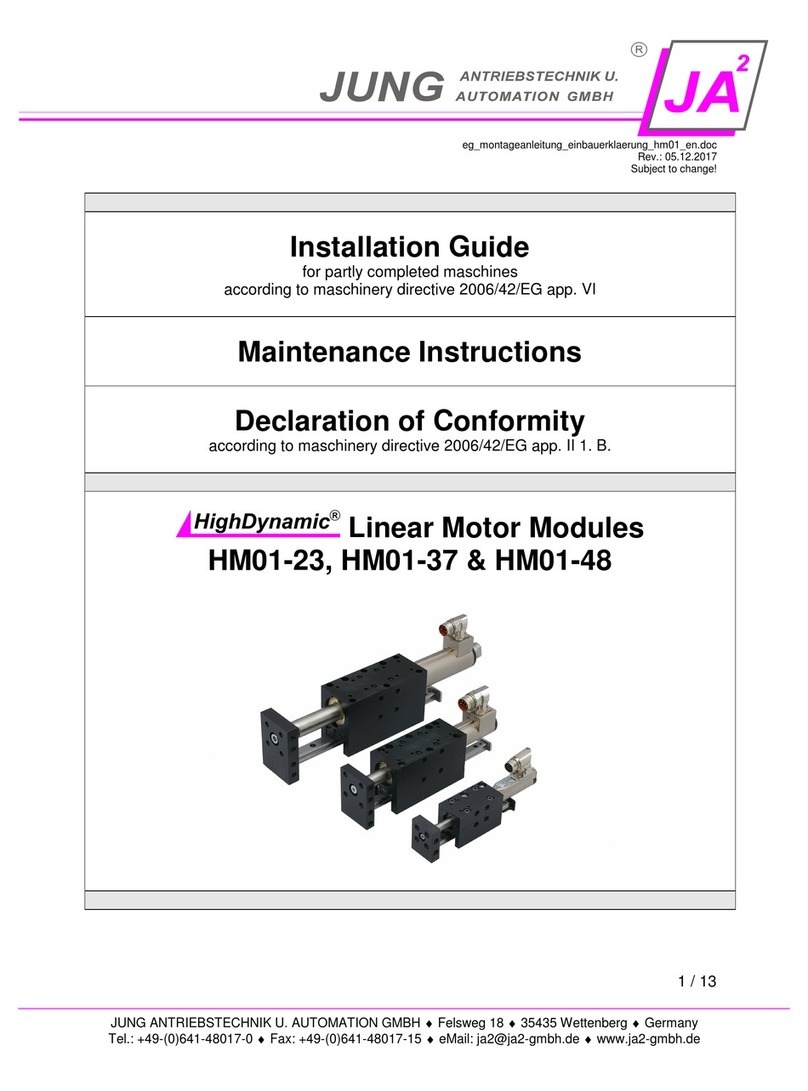
JUNG ANTRIEBSTECHNIK U. AUTOMATION GMBH
JUNG ANTRIEBSTECHNIK U. AUTOMATION GMBH HM01-37 installation guide
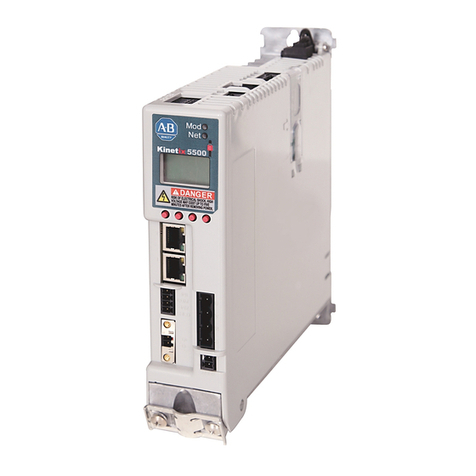
Rockwell Automation
Rockwell Automation Allen-Bradley Kinetix 5500 installation instructions
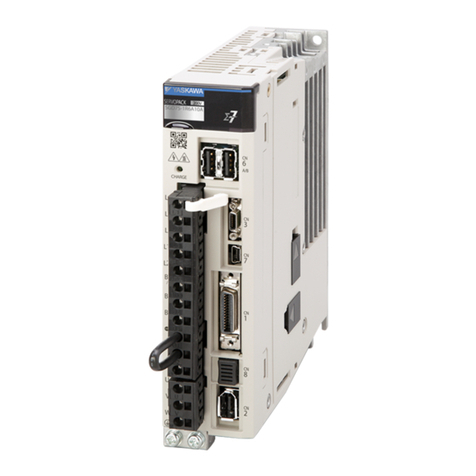
YASKAWA
YASKAWA SGD7W Series Selection Manual
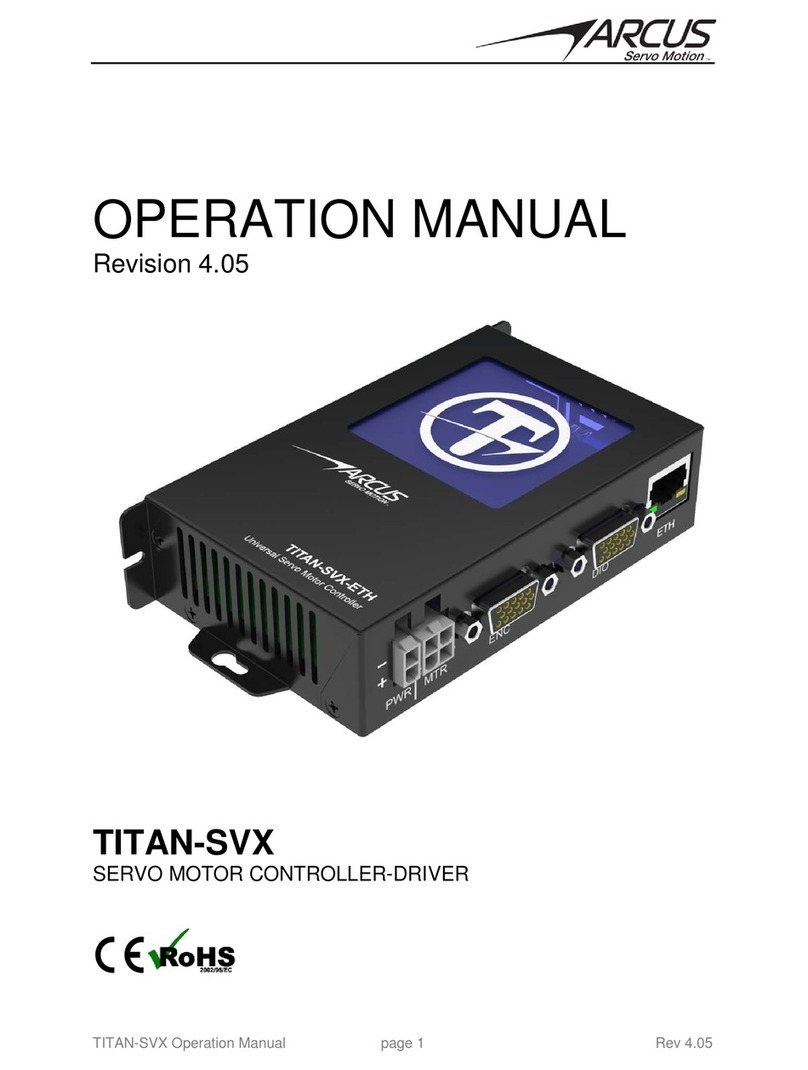
Arcus
Arcus TITAN-SVX Operation manual

Applied Motion Products
Applied Motion Products ST5-IP Quick setup guide
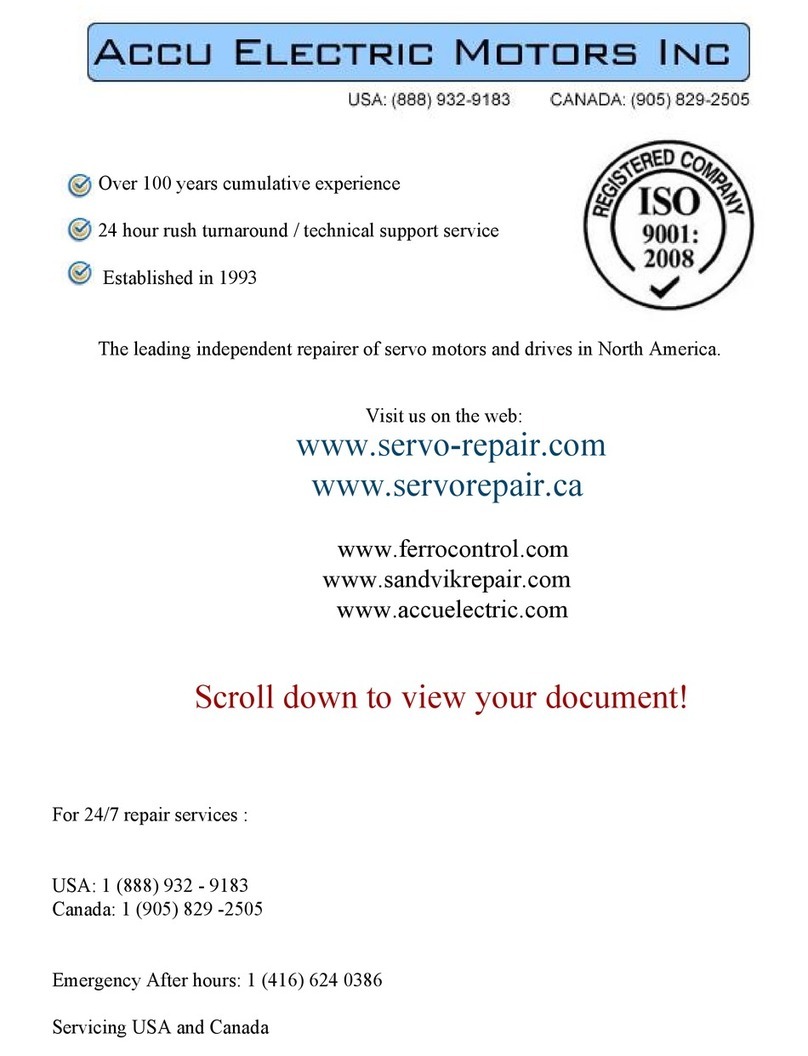
Baldor
Baldor UM Series Installation & operating manual
